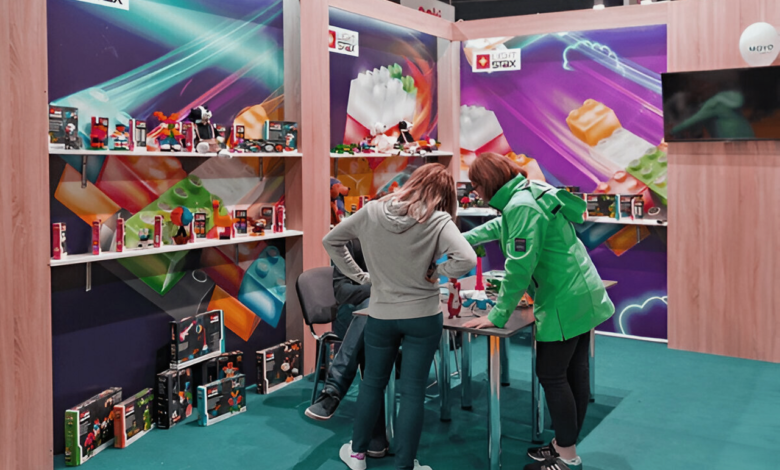
Kickstarter Gadgets has become a launchpad for some of the most innovative and sometimes baffling gadgets in recent years. While many campaigns struggle to gain traction, a select few explode into multi-million-dollar successes, leaving industry experts and consumers alike scratching their heads. These U.S. Kickstarter Gadgets made millions, but no one knows exactly why or at least, not at first glance. From high-tech coolers to oddly specific kitchen tools, these products defy conventional logic, proving that crowdfunding success isn’t just about utility, but about tapping into something deeper: human psychology, viral trends, and the art of storytelling.
As we dissect these unexpected success stories, a pattern emerges. It’s not just about the Kickstarter Gadgets themselves, but how they’re presented, who they’re marketed to, and the cultural moment they capture. Some thrive on sheer novelty, while others exploit clever marketing tactics that trigger impulsive backing. Yet, for every runaway success, there’s a cautionary tale of overpromising and underdelivering. By the end of this deep dive, we’ll uncover the hidden forces that turn obscure ideas into multi-million-dollar phenomena and what separates the fleeting fads from the truly revolutionary innovations.
These U.S. Kickstarter Gadgets Made Millions But No One Knows Why
The Unlikely Rise of Multi-Million Dollar Kickstarter Gadgets
Kickstarter Gadgets model has democratized product development, allowing inventors to bypass traditional gatekeepers and pitch directly to consumers. This has led to some of the most creative and sometimes perplexing gadgets hitting the market. While many assume that only the most practical or cutting-edge inventions succeed, the reality is far more unpredictable. Some of the highest-funded gadgets are neither the most technologically advanced nor the most necessary.
The Coolest Cooler
One of Kickstarter Gadgets most infamous success stories is the Coolest Cooler, a high-end cooler equipped with a blender, Bluetooth speakers, and USB chargers. On paper, it seemed excessive why would anyone need a cooler that blends margaritas? Yet, it became one of the platform’s most funded campaigns, raising over $13 million. The secret? It wasn’t selling a cooler; it was selling an experience.
Cautionary Tale
However, the Coolest Cooler also became a cautionary tale. Despite its massive funding, production delays and mismanagement left thousands of backers waiting years for delivery, if they received theirs at all. This highlights a recurring issue in crowdfunding: hype doesn’t always translate to execution. Yet, even with its flaws, the campaign’s initial success reveals how powerful storytelling and aspirational marketing can be.
Pebble Smartwatch
Long before Apple and Samsung dominated the smartwatch market, the Pebble Smartwatch emerged from Kickstarter Gadgets as a scrappy innovator. Unlike the Coolest Cooler, Pebble’s appeal was rooted in genuine utility it was one of the first wearable devices to sync seamlessly with smartphones. But what truly propelled its success was its positioning. Pebble didn’t just sell a watch; it sold a movement.
The Underdog That Beat Tech Giants
Pebble’s story also underscores the importance of community in crowdfunding. The company maintained constant communication with backers, offering transparency and fostering loyalty. Even after Pebble was acquired by Fitbit and discontinued, its legacy lived on as a case study in how to build a passionate fanbase before a product even exists. This grassroots appeal, combined with sleek design and early adopter perks, helped it raise over million in a follow-up.
Beekeeping Made Too Easy
Yet, like many crowdfunding darlings, the Flow Hive faced criticism. Some beekeepers argued it oversimplified the craft, and others reported issues with durability. Still, its success demonstrates how a well-targeted niche product can explode when it aligns with broader cultural values (in this case, environmentalism and self-sufficiency). Instead, their success hinges on a mix of appeal of emotional, clever branding, and perfect timing.
Fidget Cube
In 2016, the Fidget Cube became an overnight sensation, raising $6.4 million for what was essentially a small, multi-sided stress-relief toy. At the time, fidget gadgets weren’t mainstream, and the campaign’s success seemed inexplicable. But the Fidget Cube didn’t just happen it capitalized on a growing cultural trend. With increasing awareness of ADHD and workplace anxiety, the product positioned itself as a discreet tool for focus.
Solving a Problem No One Knew They Had
The campaign also excelled in presentation. The pitch video was clean, professional, and oddly satisfying, showcasing the cube’s various buttons, switches, and dials in a way that made it irresistible to click “Back This Project.” Like many viral Kickstarter Gadgets, the Fidget Cube benefited from the “shut up and take my money” effect a product so oddly compelling that people bought into it almost impulsively.
Flow Hive
Another unexpected success was the Flow Hive, a beekeeping system that claimed to let users harvest honey without disturbing the bees. It raised over $13 million, despite beekeeping being a niche hobby. So why did it resonate? The answer lies in its dual appeal: it catered to both seasoned beekeepers looking for convenience and eco-conscious newcomers drawn to sustainable living.
The Dark Side of Viral Kickstarter Campaigns
For every Pebble or Fidget Cube, there’s a Zano Drone or Kreyos Smartwatch campaigns that raised millions but collapsed under mismanagement. The crowdfunding model is inherently risky; backers act as early investors, but unlike traditional investors, they have little recourse if the product fails. This has led to growing skepticism, with some backers becoming wary of overhyped campaigns.
Successful Creators
Successful creators now face higher expectations. Transparency, realistic timelines, and post-campaign updates are no longer optional they’re essential to maintaining trust. The era of “build it and they will come” is over; today’s backers demand proof that creators can deliver. The campaign’s visuals crystal-clear honey flowing straight from the hive were mesmerizing, making the product feel revolutionary.
Read More: Fortune 500 or Fortune Fools? The Weirdest Corporate Fails in U.S. History
Conclusion
The runaway success of certain Kickstarter Gadgets may seem random, but there’s always a method to the madness. Whether through storytelling, psychological triggers like FOMO, or sheer novelty, these products tap into something deeper than pure functionality. They sell dreams, identities, and sometimes, just the thrill of being part of the next big thing. Its genius lay in its simplicity and universality: everyone, from students to office workers, could justify needing one.
As crowdfunding evolves, the formula for success is becoming clearer. It’s no longer enough to have a great idea you need a compelling narrative, airtight marketing, and a product that resonates emotionally. The next multi-million-dollar Kickstarter Gadgets might seem absurd at first glance, but if history is any indication, it’ll make perfect sense in hindsight. The campaign framed it as a rebellion against big tech, a product “by enthusiasts, for enthusiasts.”
FAQs
Why do some Kickstarter gadgets go viral while others fail?
Success often hinges on storytelling, emotional appeal, and timing not just the product itself.
Are high-funded Kickstarter campaigns guaranteed to deliver?
No, many face delays or fail due to poor planning, making backer trust crucial.
What’s the most funded gadget in Kickstarter history?
The Pebble Smartwatch holds the record, raising over $20 million in its second campaign.
How important is the pitch video?
Extremely high-quality videos build credibility and help backers visualize the product.
Can any idea succeed on Kickstarter Gadgets with enough marketing?
Not necessarily even great marketing can’t save a flawed product, but it can amplify a strong one.











